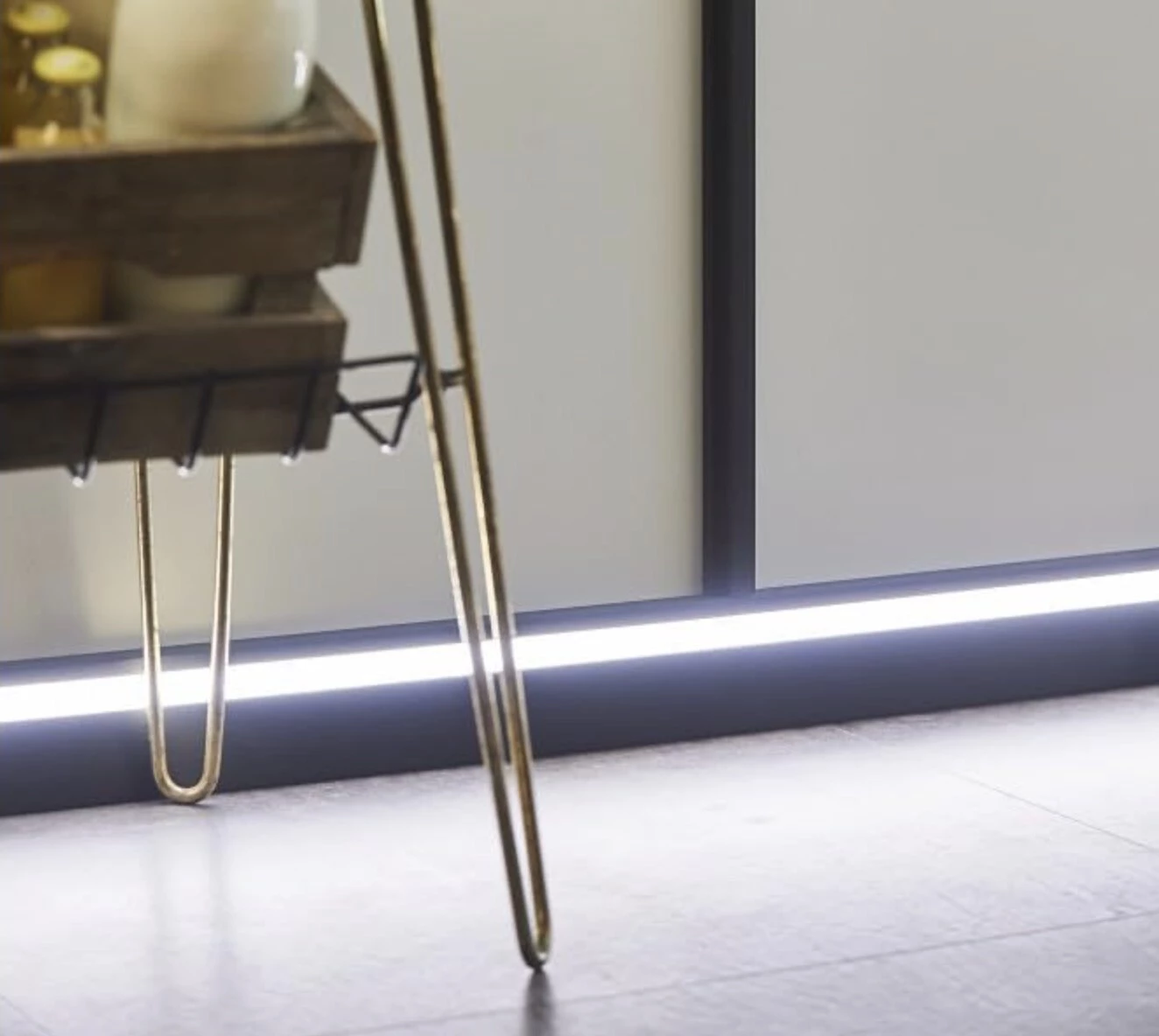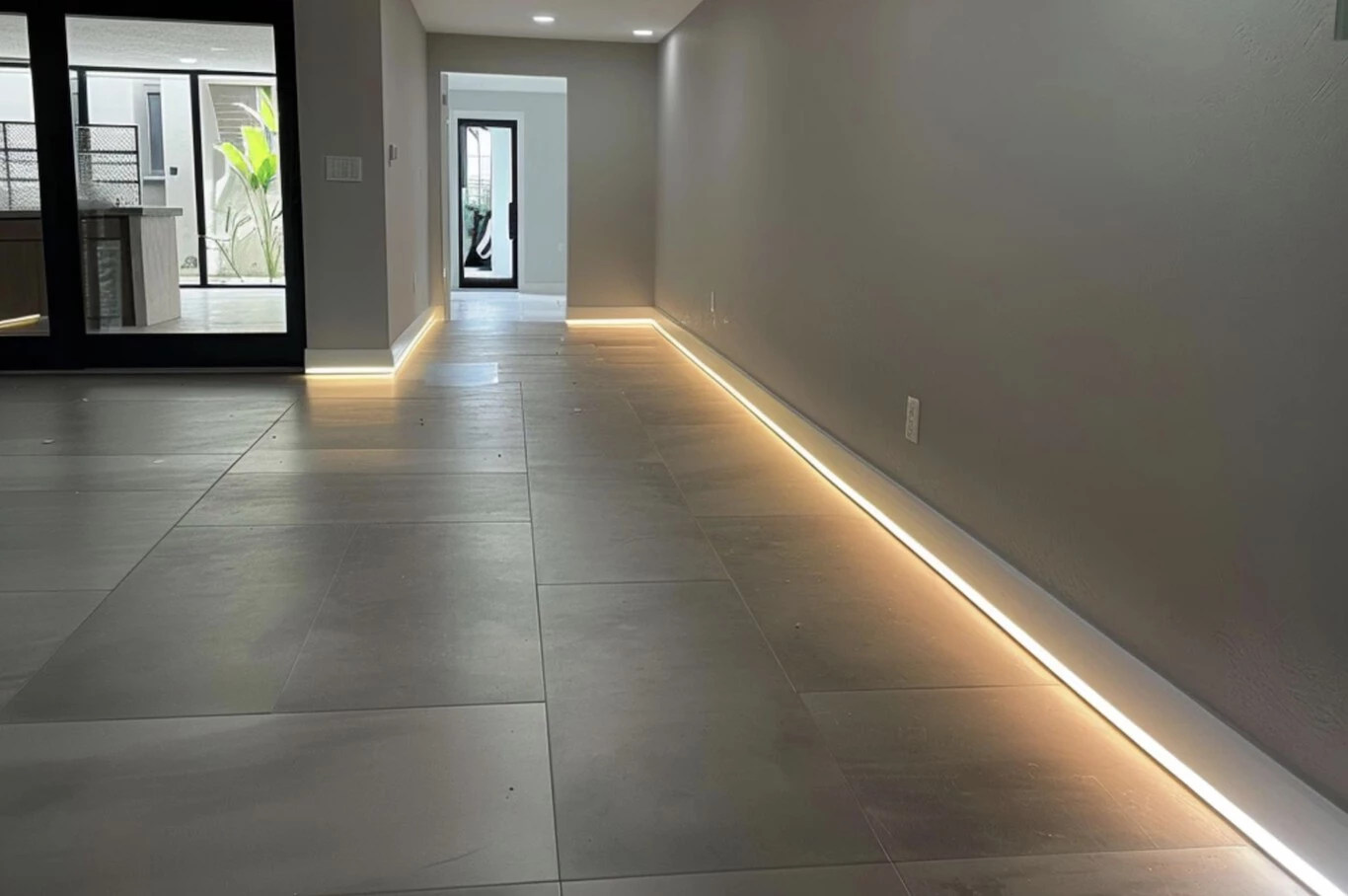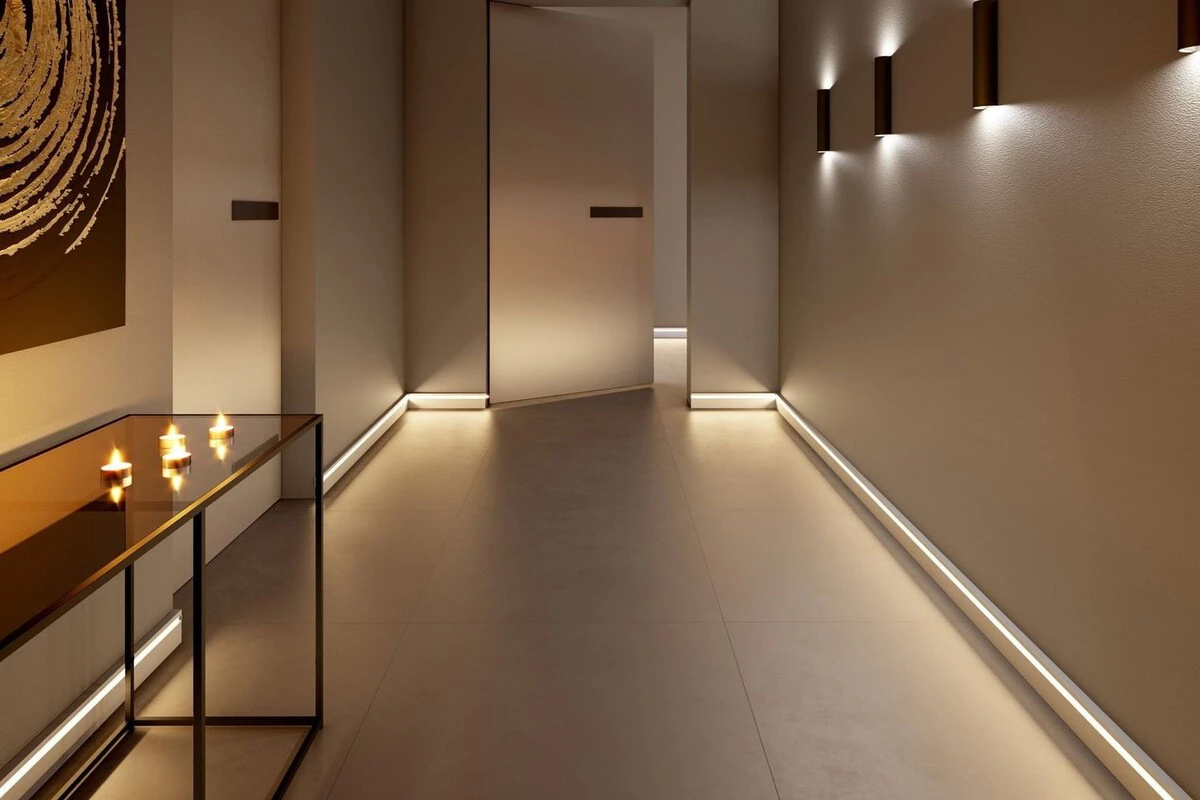This solution takes advantage of an element that exists in almost every home to create a mood lighting system. The time has come to light up the house. On many occasions it is not just a question of installing lights, but of playing with them so that, in addition to lighting, they also provide a decorative value. In this sense, the skirting boards that run throughout the house can play a very interesting role.
When considering how to illuminate and decorate at the same time, multiple options are usually considered. In spaces where there are no sockets nearby, wireless solutions are the most sought after. Skirting boards with LED lights represent a functional alternative that, in addition to providing light to dark corners, discreetly embellish the environment.
Wireless ambient light
I must admit that I was unaware of this possibility until I saw it recently in a shop. I knew that there were skirting boards designed to hide cables, but I was completely unaware that there were also boards with built-in LED lighting systems.

Since skirting boards are a fixed element in almost all homes, it is a brilliant idea to use them as a source of indirect light. And even more so when the lighting is integrated in such an elegant and functional way.
This type of indirect lighting, in which the light source is hidden from view, not only provides a soft light in passageways, but also helps to improve spatial perception in narrow or small rooms. Being located close to the floor, they provide a soft and uniform light that is ideal for passageways, corridors, stairs or bedrooms, acting as a guide without dazzling. They help to create a feeling of greater spaciousness and depth, especially in long or small rooms.
In addition, in whatever room they are used, they generate a warmer, more comfortable and visually enveloping atmosphere, making the space more pleasant and welcoming. They are a functional and aesthetic solution for improving home lighting without resorting to traditional lamps or complex installations.
They are also a perfect solution for homes with a small surface area as they require hardly any additional space to install. What’s more, as they are easy to install, they can be adapted to both renovations and existing homes.
They can also act as multifunctional elements, hiding cables or combining with motion sensors for greater comfort and energy efficiency. Many of these skirting boards also include conduits that can be used to run cables without them being seen.

The installation of these elements is extremely simple. As a general rule, you only need adhesive to stick them to the wall. In addition, almost all of them come clean and you will have to buy the LED strip you want to use separately. In this sense, you can opt for a model in shades of white or colors to regulate the lighting at home, something that will be much more comfortable if you have a remote control.
Without showing the plug
Of course, always remember that you will need to have a power point nearby to power the lighting system. For this reason, and to achieve a more aesthetic result, it is advisable to plan in advance with a detailed diagram of what you want to install.

To carry out proper ducting and concealed wiring, the first thing is to be clear about where the power supply will be connected. Ideally, it should be located in a discreet area, such as the back of a cupboard, in a false ceiling or inside a recessed box.
Afterwards, the wiring should be routed behind the baseboards or through channels made in the wall or floor. If it is a renovation, you can also take advantage of existing ducts or already embedded pipes.
It is essential to avoid having the plug visible and exposed; instead of using a conventional outlet, it is best to connect the transformer directly to a junction box or to an already installed light point.









